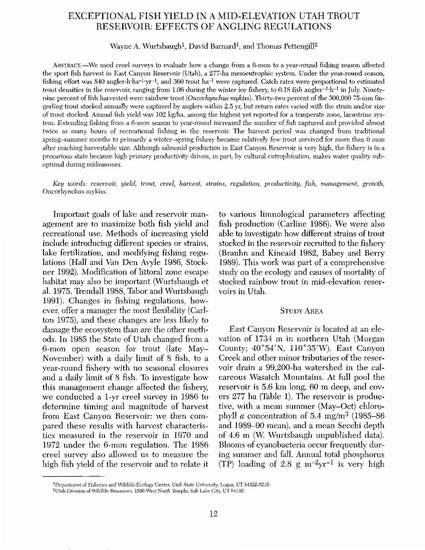
We used creel surveys to evaluate how a change from a 6-mon to a year-round fishing season affected the sport fish harvest in East Canyon Reservoir (Utah), a 277-ha mesoeutrophic system. Under the year-round season, fishing effort was 840 angler-h·ha−1·yr−1, and 360 trout ha−1 were captured. Catch rates were proportional to estimated trout densities in the reservoir, ranging from 1.06 during the winter ice fishery, to 0.18 fish angler−1·h−1 in July. Ninety-nine percent of fish harvested were rainbow trout (Oncorhynchus myskiss). Thirty-two percent of the 300,000 75-mm fingerling trout stocked annually were captured by anglers within 2.5 yr, but return rates varied with the strain and/or size of trout stocked. Annual fish yield was 102 kg/ha, among the highest yet reported for a temperate zone, lacustrine system. Extending fishing from a 6-mon season to year-round increased the number of fish captured and provided almost twice as many hours of recreational fishing in the reservoir. The harvest period was changed from traditional spring–summer months to primarily a winter–spring fishery because relatively few trout survived for more than 6 mon after reaching harvestable size. Although salmonid production in East Canyon Reservoir is very high, the fishery is in a precarious state because high primary productivity driven, in part, by cultural cutrophication, makes water quality suboptimal during midsummer.
Available at: http://works.bepress.com/wayne_wurtsbaugh/344/
